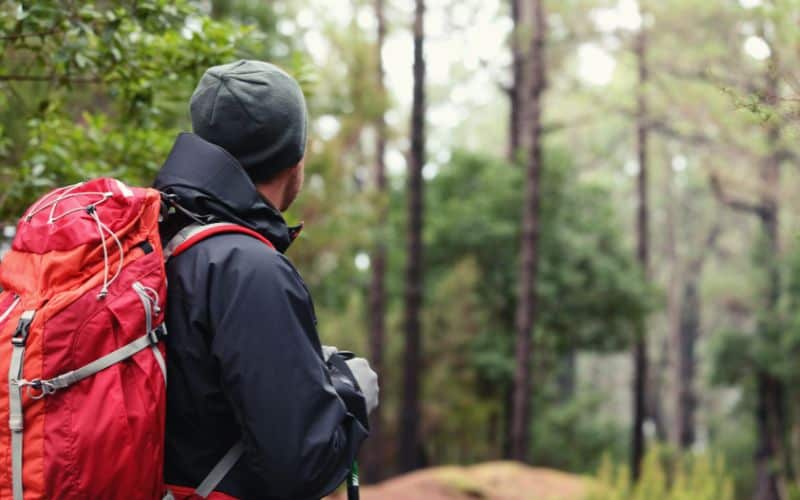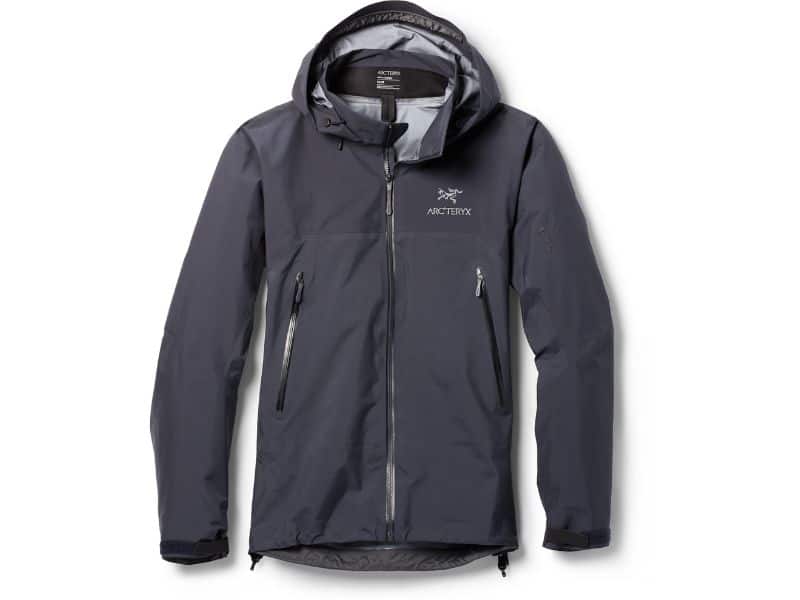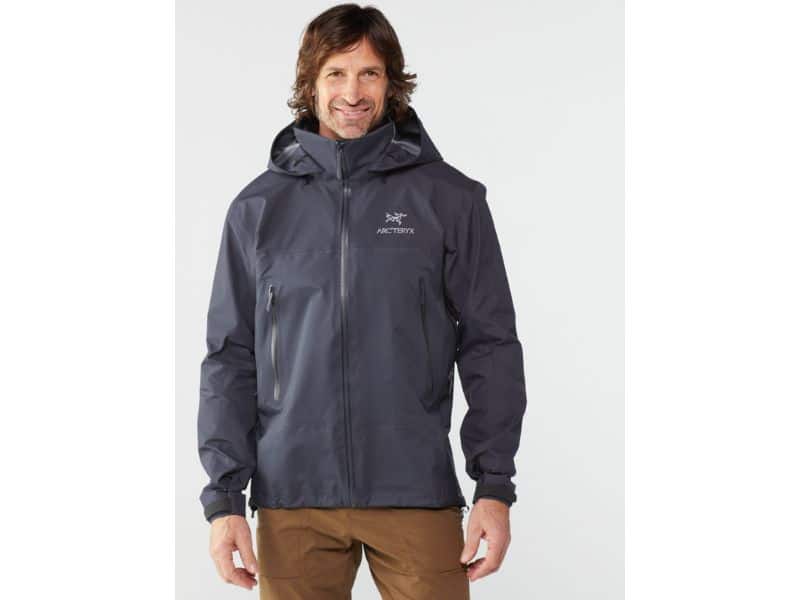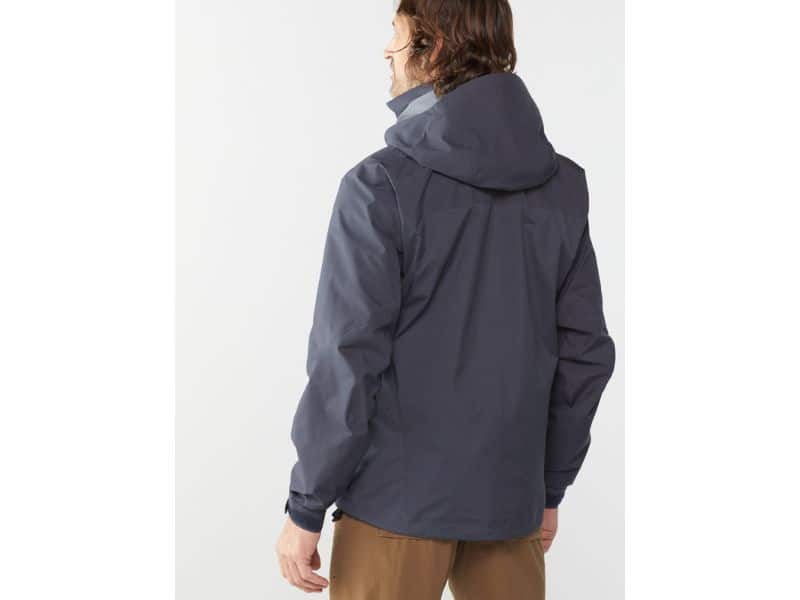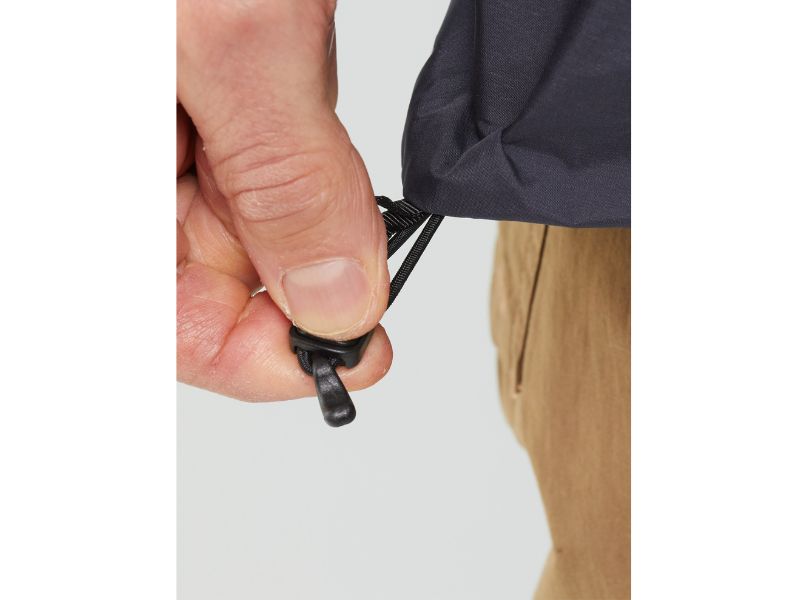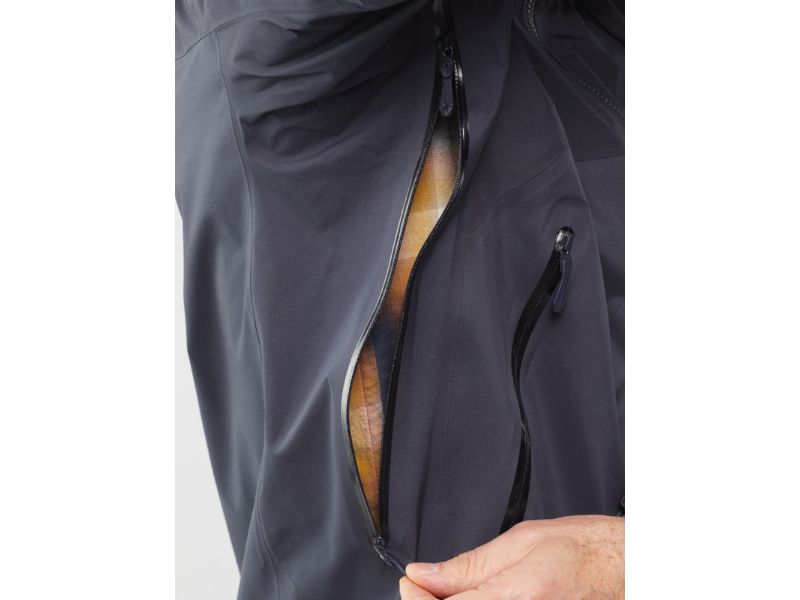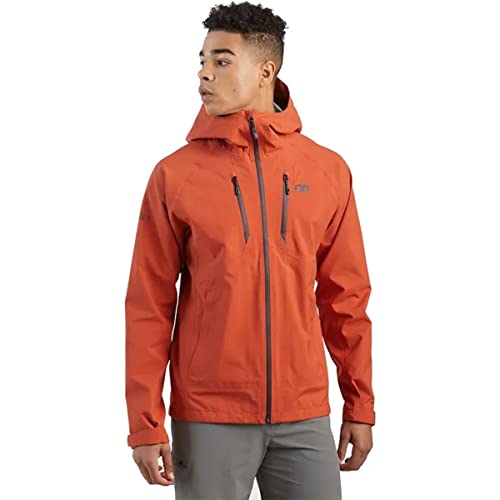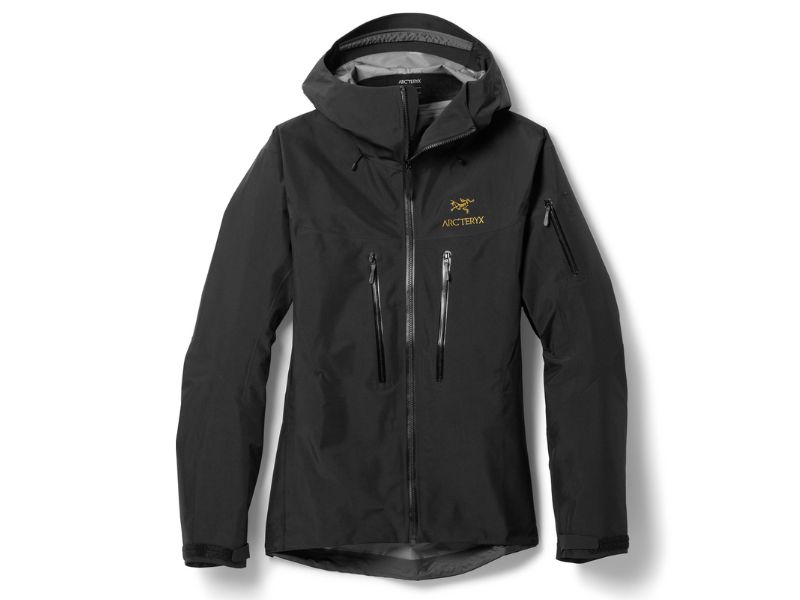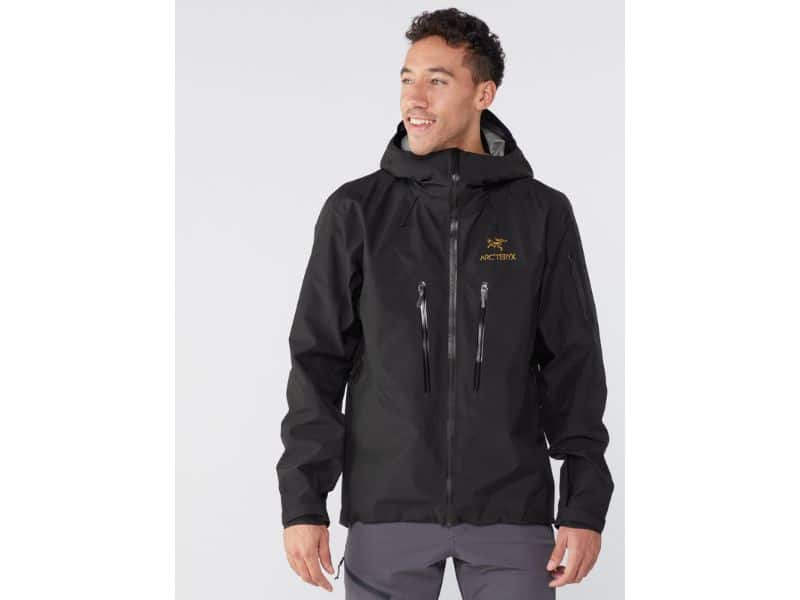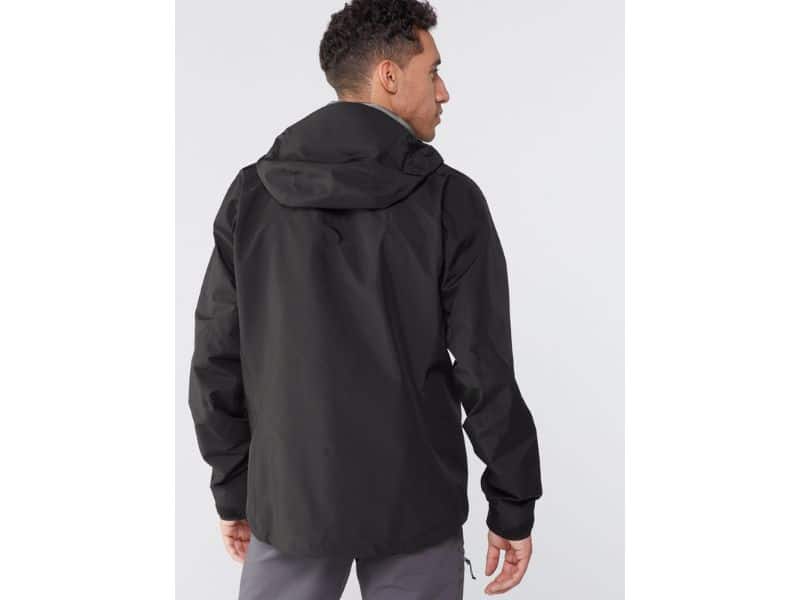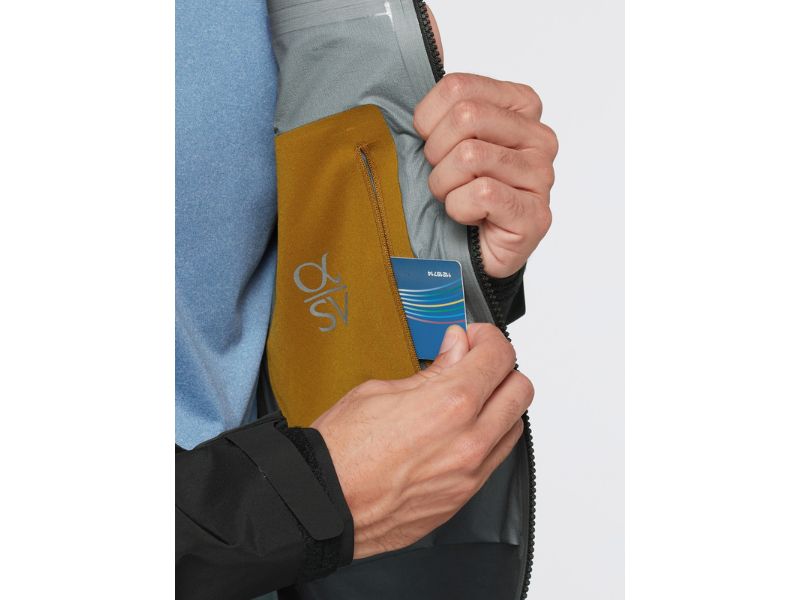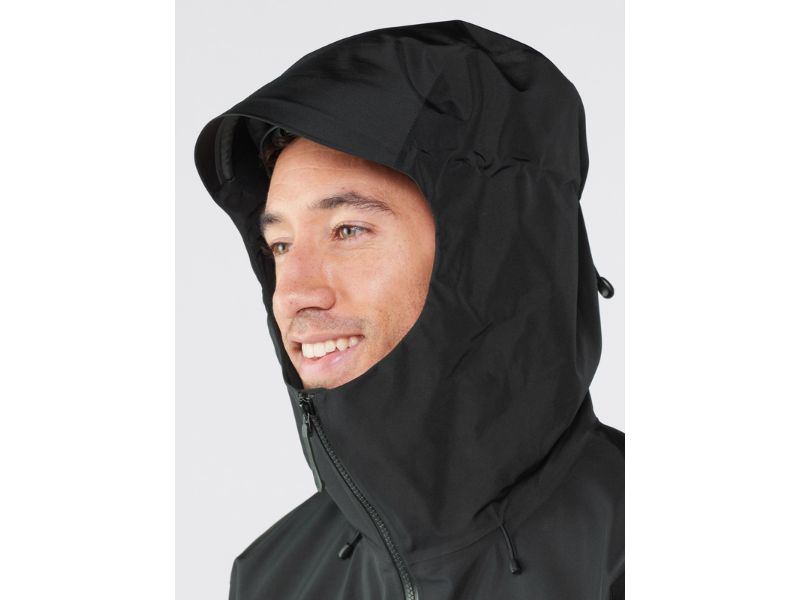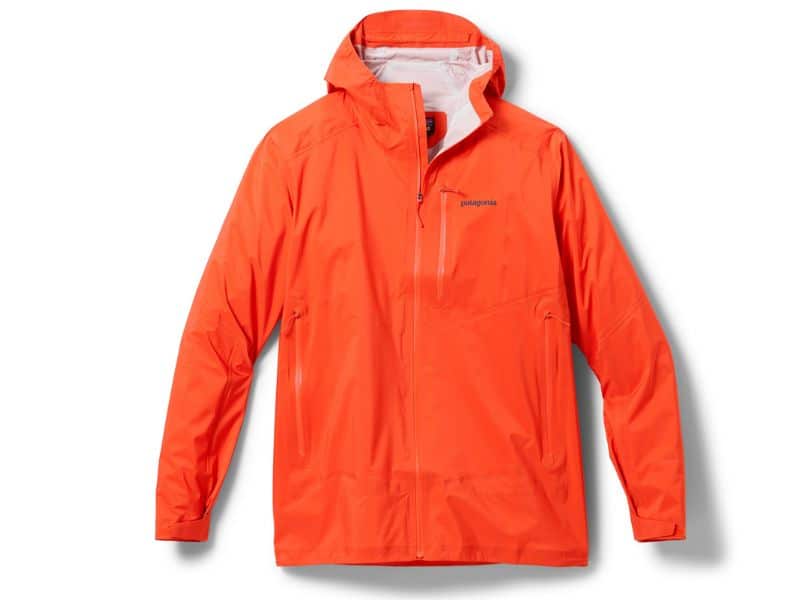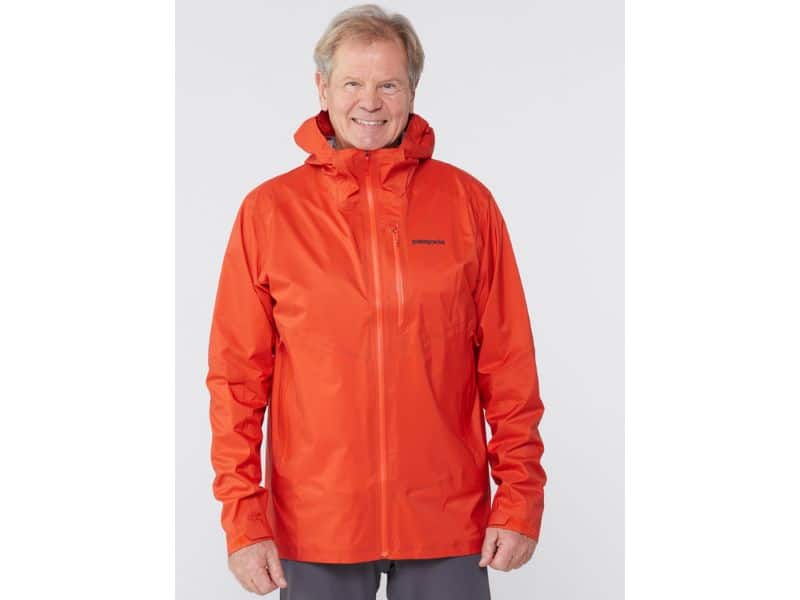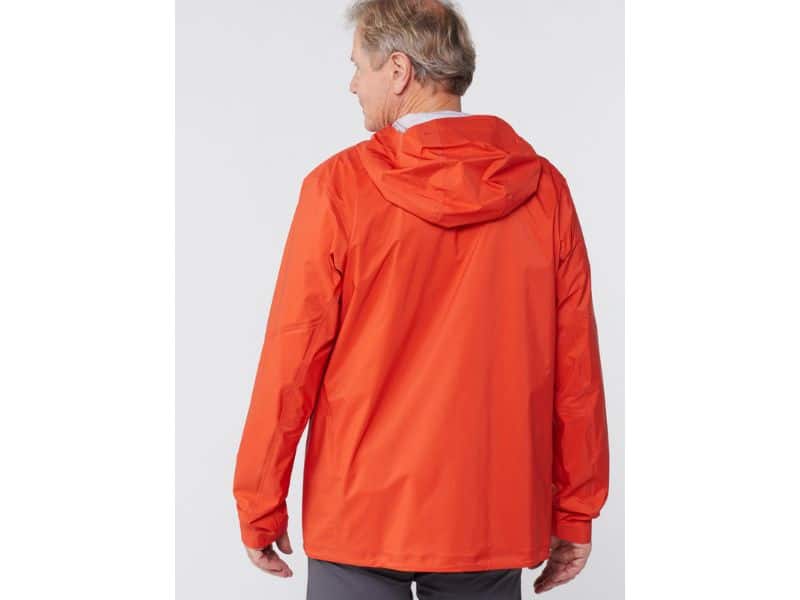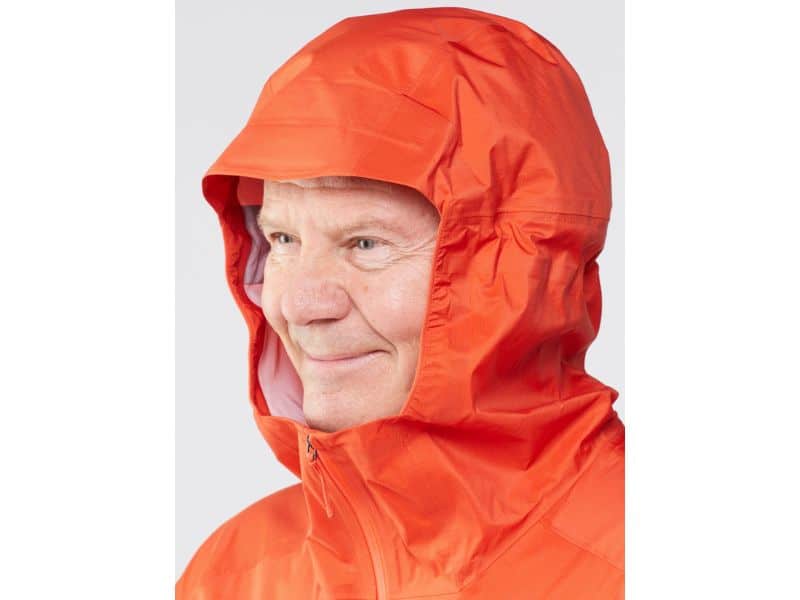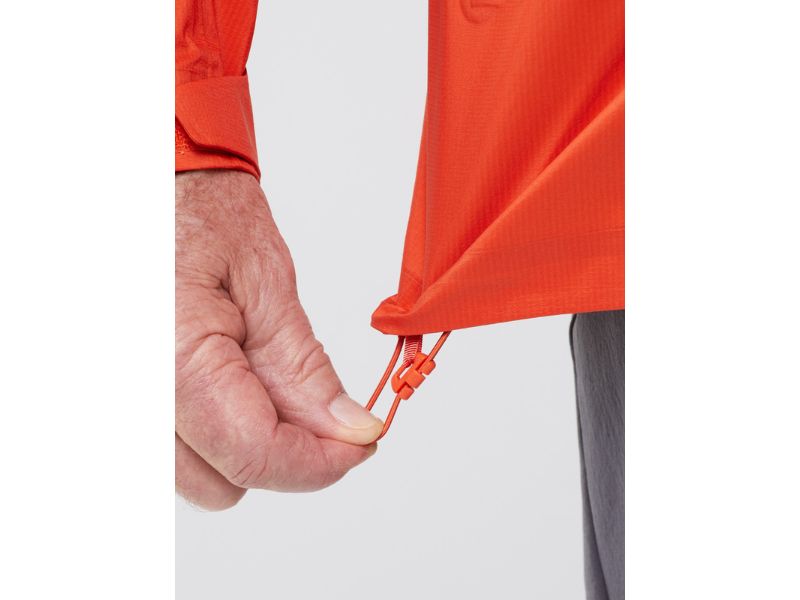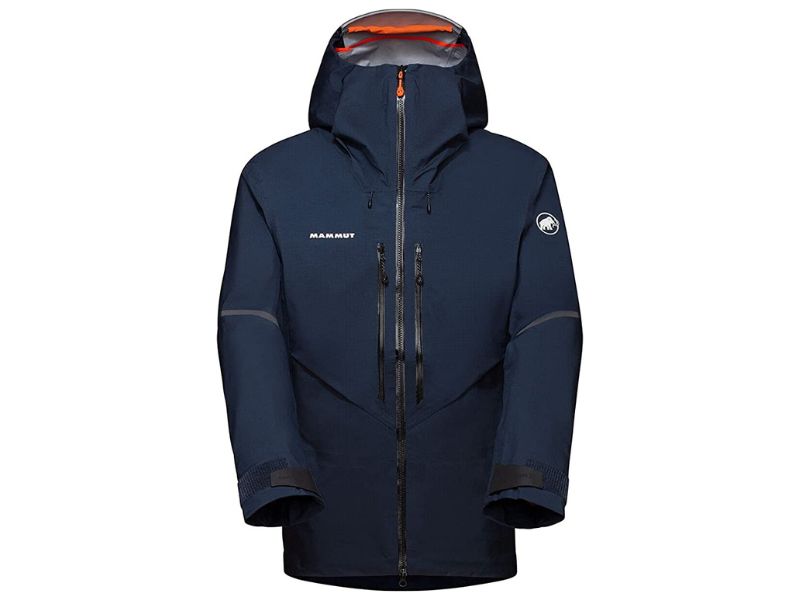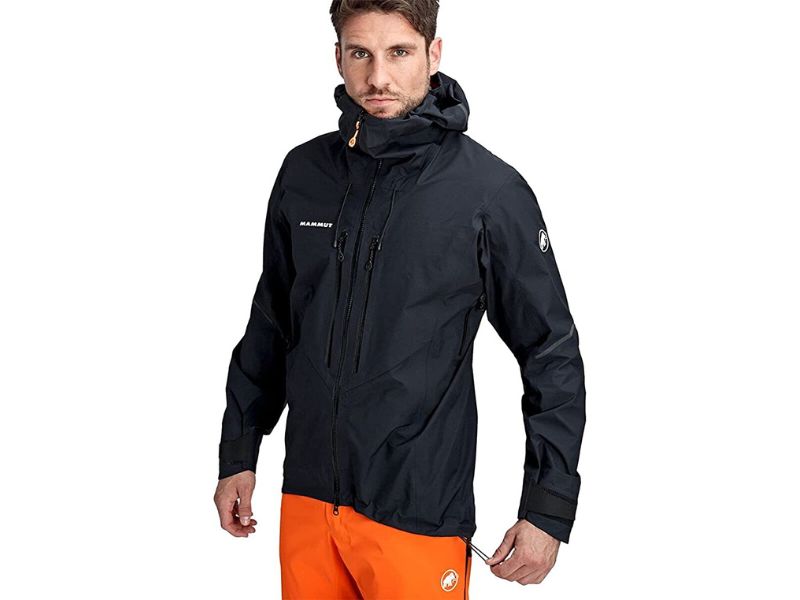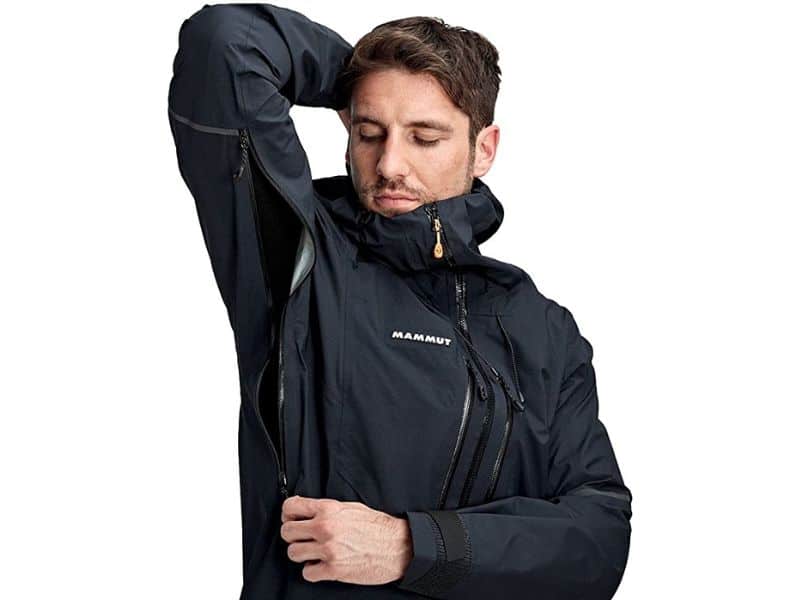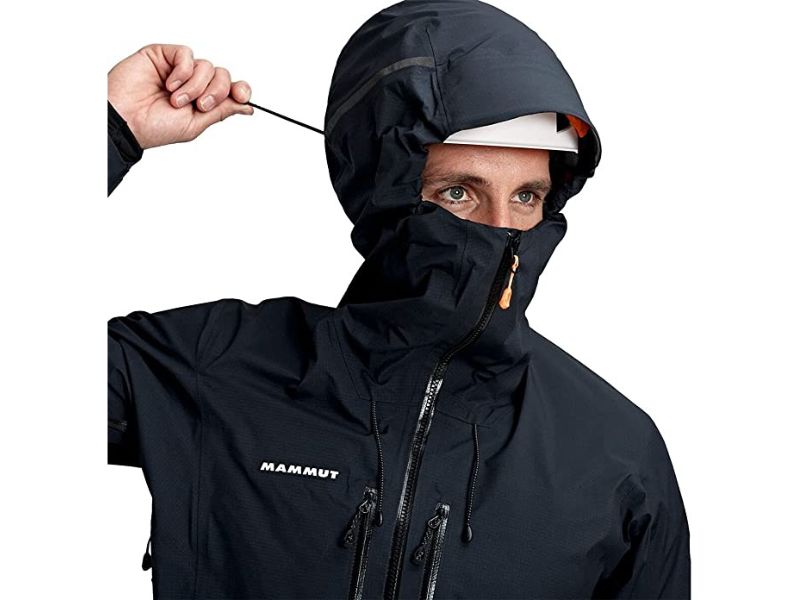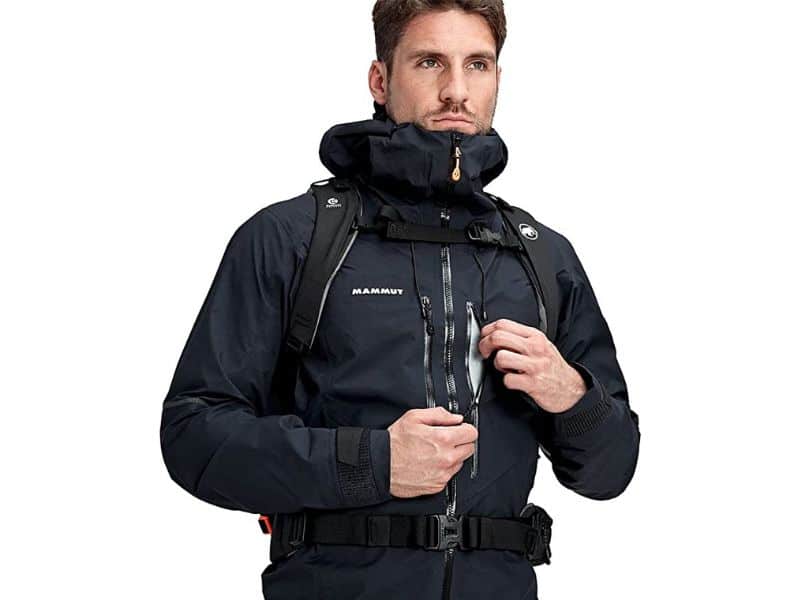Hardshells are the optimal choice for staying dry and comfortable in extreme weather. While softshells and rain jackets are suitable for mild, three-season hikes, for high-altitude treks or severe storms, a hardshell’s robust, three-layer protection is essential.
We’ve compiled a list of our favorite hardshell jackets to match your requirements, budget, and activity. Our reviews detail each jacket’s strengths and weaknesses and specify the adventures for which it’s best suited.
In our opinion the Arc’teryx Beta AR (click here for women’s version) is our pick as the best overall hardshell jacket – it is a lightweight hardshell jacket that provides the perfect balance of weather protection, breathability, mobility, and toughness, and a full complement of dialed-in, user-friendly features.
If you don’t think the Beta AR is the jacket for you, find detailed advice below our reviews to help you select a jacket based on the criteria most important to you.
Table of Contents
At A Glance: Quick Recommendations
-
Editors Choice:
Arc’teryx Beta AR
“This jacket combines Gore-Tex Pro technology with 40d and 80d ripstop fabric and a next-level feature set to provide the optimal balance of weather protection, comfort, and mobility.” -
Runner-Up:
Mountain Equipment Lhotse
“An incredibly tough alpine hardshell that’s built to withstand the very worst the weather can throw at it.” -
Best Value:
Outdoor Research Microgravity
“An affordable and very comfortable hardshell hiking jacket that boasts the best breathability of all the models on our list.” -
Best Budget:
Mammut Kento
“A reliable entry-level hardshell that’s fairly priced and offers more than enough weather protection for the needs of most users.” -
Best Mobility:
Black Diamond Highline Stretch
“Marrying the wet-weather performance of a hardshell with the mobility of a softshell, this is the most comfortable jacket on our list.” -
Premium Pick:
Arcteryx Alpha SV
“This jacket’s snug fit, 100d Gore-Tex fabric, and sleek, articulated design make it a great option for technical pursuits in particularly gnarly conditions.” -
Best Ultralight:
Patagonia Storm10
“Weighing just 8.3 oz., this is one of the best hardshell jackets out there for backpacking or fast-and-light adventures.” -
Best for Mountaineering:
Mammut Nordwand Advanced
“Made with 80d fabric and Gore-Tex Pro waterproofing technology, this one’s our favorite for excursions in extreme conditions.”
Further info: If you’re not sure a hardshell is what you need, then check out our main article on the best hiking jackets.
Which is the Best Hard Shell Jacket of 2024?
We’ve tested numerous jackets over the years and have shortlisted all the jackets below as worthy contenders for this years top award.
- Arc’teryx Beta AR
- Mountain Equipment Lhotse
- Outdoor Research Microgravity
- Mammut Kento
- Black Diamond Highline Stretch
- Arc’teryx Alpha SV
- Patagonia Storm10
- Mammut Nordwand Advanced
Arc’teryx Beta AR
Editors ChoiceWaterproofing: 3-layer Gore-Tex Pro ⸱ Weight: 1 lb. ⸱ HH: 28,000 mm ⸱ MVTR: 25,000 g/m²/24h
In our opinion, offering the best performance for the price the Arc’tryx Beta AR (click here for women’s version) is not just the top hardshell in Arc’tryx’s range, but the best overall hardshell.
This jacket may cost a pretty penny, but in terms of craftsmanship, protection against the elements, durability, and suitability for rough and tumble in the mountains, it leaves the best of the rest languishing in its wake.
The Beta AR is made with Gore-Tex Pro waterproofing technology, which is the crème de la crème of the Gore-Tex range. With a HH of 28,000 mm and MVTR of 25,000 mm, this fabric provides the most robust waterproofing and highest breathability of any on our list, making it ideal for high-output activities in the most extreme conditions.
But what we love most about this jacket is its dialed-in design and next-level attention to detail. Though made with a minimalist, alpine-style fit, its incorporation of “no-lift” gusseted underarms, articulated elbows, a droptail hem, and ergonomic 3-dimensional patterning make it one of the most comfortable and mobile hardshell jackets we’ve ever worn.
And the other features don’t disappoint either. There’s a duo of oversized hand pockets, an interior pocket, a chest pocket, a well-designed helmet-compatible hood, WaterTight zippers, a pair of water-resistant pit zips for ventilation, laminated adjustable cuffs, a microsuede chin guard, and a RECCO reflector for avalanche emergencies.
In short, if you’re looking for a hardshell jacket that ticks every box that needs ticking, this is it.
PROs
- Highly waterproof and breathable
- 3 exterior pockets and 1 interior pocket
- Underarm vents
- Trim fit
- Harness-compatible pockets
CONs
- Not the lightest option out there
- Pricey
Bottom-Line: An incredibly well-designed jacket that uses 40d Gore-Tex Pro technology to deliver the perfect balance of waterproofing, breathability, and durability.
Mountain Equipment Lhotse
Runner-UpWaterproofing: Gore-Tex Pro ⸱ Weight: 18.2 oz. ⸱ HH: 28,000 mm ⸱ MVTR: 25,000 g/m²/24h
The British made Mountain Equipment Lhotse has a well-earned reputation as a seriously badass rain shell for high-alpine adventures (and also, of course, for the brand’s abysmally bad native climate!).
Weighing 18.2 oz., this is the heaviest option on our list. However, its use of 40d ripstop nylon fabric, 80d ripstop inserts in areas prone to abrasion, and a Gore-Tex Pro membrane make it pretty much the very definition of a “bombproof” mountaineering jacket.
There’s very little to separate the Lhotse from the other Gore-Tex Pro jackets on our list, the Beta AR and the Mammut Nordwand. These three jackets offer identical waterproof performance and breathability and boast a similar alpine fit. If serious weather protection is what you need, none of them will disappoint.
However, the winner of our review, the Beta AR, scooped our “Best Overall” award courtesy of its slightly more ergonomic fit and lower weight. That said, if alpine or ice climbing is on the cards, the Lhotse’s tougher fabrics might just be worth the weight penalty.
Features-wise, the Lhotse has everything you’d expect to find on a high-end mountaineering jacket. In addition to those 80d reinforcements, there’s plenty of other good stuff going on, most notably a fully adjustable hood and cuffs, a trio of oversized pockets, underarm pit zips with a laminated and bonded entry, and articulated pre-shaped sleeves.
PROs
- Tough as nails
- Completely waterproof
- Affordable
- Pit zips
- Articulated alpine fit
CONs
- Heavy and bulky
Bottom-Line: A burly beast of a waterproof shell that’s equipped to keep you dry in even the most heinous conditions.
Outdoor Research Microgravity
Best ValueWaterproofing: Ascentshell ⸱ Weight: 14.6 oz. ⸱ HH: 15,000 mm ⸱ MVTR: 30,000 g/m²/24h
The Outdoor Research Microgravity (click here for women’s version) is well worth a look if comfort sits higher on your list of priorities than high-end weather protection.
While this shell has a few flaws that make it less than ideal for especially gnarly conditions, there’s also a lot to love.
For starters, the Microgravity’s MVTR of 30,000 g/m²/24h makes it the most breathable jacket on our list, earmarking it as something of a shoo-in for those who take part in high-intensity and high-output activities.
Next, there’s the trend-breaking use of OR’s AscentShell waterproof fabric. While this is less waterproof (15,000 mm) than the Gore-Tex Pro or Active fabric used in the Nordwand, Beta AR, and Lhotse, it’s also far softer against the skin, has a softshell-like stretch, and is a far more affordable option.
Finally, the Microgravity has a feature set including everything you could want in a jacket. There’s a fully adjustable helmet-compatible hood, two handwarmer packers, two chest pockets, Dynamic Reach underarm panels for improved mobility, and AquaGuard zippers throughout. While we would’ve liked a pair of pit zips, the fabric’s breathability is such that they aren’t a big miss.
PROs
- Waterproofing: AscentShell
- Weight: 14.6 oz.
- HH: 15,000 mm
- MVTR: 30,000 g/m²/24h
CONs
- Very comfortable
- Highly breathable
- Stretchy outer layer
- Underarm gussets
- Helmet-compatible hood
Bottom-Line: An affordable hardshell jacket that offers above-average weather protection and all the comfort of a softshell.
Mammut Kento
Best BudgetWaterproofing: Mammut DRYtechnology™ Pro ⸱ Weight: 15.3 oz. ⸱ HH: 20,000 mm ⸱ MVTR: 15,000 g/m²/24h
The Mammut Kento (click here for women’s version) is a great option if you’re happy to make a few compromises on waterproofing and breathability to save some money. For many hikers, the performance offered by the more expensive jackets on our list might be overkill for the conditions in which they typically hit the trails.
This entry-level hardshell rain jacket performs well – if unexceptionally – in every metric. It has a respectable hydrostatic head rating of 20,000 mm, an MVTR of 15,000 g/m²/24h, is made with durable, 40-denier polyamide outer fabric, and also has fully taped seams, pit zips, an adjustable and helmet-compatible hood, and harness-compatible pockets.
While the Mammut DRYtechnology™ Pro waterproofing makes the Kento both the least breathable and least waterproof option on our list, it’s hard to quibble given that it costs a fraction of the price of the Gore-Tex Pro and Active jackets on this list.
This jacket weighs a fairly hefty 15.3 oz., which makes it the second heaviest we reviewed after the ME Lhotse. And compared to the other low-cost model, the OR Microgravity, it’s a whole 0.7 oz. heavier and a lot less breathable. It does, however, partially atone for these shortcomings with its superior waterproofing and inclusion of pit zips and articulated sleeves.
PROs
- Affordable
- Two handwarmer pockets & 1 internal chest pocket
- Splash-proof pocket zippers
- Pit zips
- Helmet-compatible and adjustable hood
CONs
- Less robust weather protection
- Lacks the breathability required for high-output activities
Bottom-Line: A well-made, budget hardshell jacket that provides more than enough weather protection for the needs of most 3- or 4-season hikers.
Black Diamond Highline Stretch
Best MobilityWaterproofing: BD.dry Stretch Nylon 3L with GTT ⸱ Weight: 12.7 oz. ⸱ HH: 20,000 mm ⸱ MVTR: 20,000 g/m²/24h
The Black Diamond Highline Stretch is a fully mobile, stretchy softshell jacket impersonator – for mobility we love this jacket.
Once upon a time, even the best hardshell jackets were stiff, unyielding affairs that often left you feeling like you were in a straight jacket rather than a merely waterproof one. As technologies and designs have evolved, we were subsequently blessed with articulated fits and gussets that afforded a little more leeway for movement, but which often added to bulk and weight. Then came the Highline Stretch which takes it futher
Let’s start with the USP, the oh-so-endearing “stretch” from which the Highline takes its surname.
Thanks to its use of stretchy nylon fabric in combination with a robust water-repellent finish and 20,000 mm waterproof membrane, the Highline essentially marries the best bits of a softshell jacket with a traditional hardshell while doing away with the shortcomings of each.
This means you get a jacket that’s more mobile than almost any other hardshell out there but also waterproof and breathable enough for all but the most extreme wet-weather adventures.
While it’s not as waterproof as shells like the Beta AR, ME Lhotse, or Mammut Nordwand, it does plenty to make up for this slight shortfall.
The Highline also uses a brand-spanking-new, potentially revolutionary GTT (Green Theme Technology) water-repellent coating. This isn’t only PFC-free and, thus, more environmentally friendly than traditional durable water repellent coatings, but is also hyper-fused to the fabric fibers, meaning you’ll never have to waste time or $ refreshing it with a post-purchase spray.
PROs
- Outstanding mobility
- Pit zips
- Fully taped seams
- GTT water-resistant finish
- Helmet-compatible hood
CONs
- Less waterproof and breathable than the top dogs on our list
Bottom-Line: A superbly comfortable waterproof jacket that combines the wet-weather performance of a high-end hardshell with the mobility of a softshell.
Arc’teryx Alpha SV
Premium PickWaterproofing: 3L Gore-Tex Pro ⸱ Weight: 1 lb. 2 oz. ⸱ HH: 28,000 mm ⸱ MVTR: 25,000 g/m²/24h
The Arc’teryx Alpha SV (click here for women’s version) is well worth a place on your shortlist if you are looking for a performance-oriented jacket that’s geared towards more technical and high-intensity high-alpine pursuits.
This jacket is made with N100p-X 3-layer Gore-Tex Pro waterproof/breathable fabrics and included N80p-X Gore-Tex Pro reinforcements in high-wear zones for increased abrasion resistance. While billed as a mountaineering jacket, we found the feature set and mobility of this hardshell made it equally well-suited to regular hiking.
The Alpha SV is among the most intelligently designed on our list. On the shoulders, it uses reinforced patches to double down on abrasion resistance. It also has a helmet-compatible storm hood, anatomic shaping and underarm gussets, a duo of interior pockets, three hipbelt-compatible exterior pockets, and die-cut velcro cuff adjusters to reduce bulk.
The SV in the Alpha’s name stands for ‘severe’, a reference to its ability to fend off the foulest of weather. In addition to having an HH of 28,000 mm and MVTR of 25,000 g/m²/24h, meaning it will keep you dry and sweat-free even when moving fast and working hard, it has Gore-taped seams and WaterTight zippers.
There’s no getting around the fact that this is a very pricey jacket. However, if you’re happy to “shell” out for the best your money can buy, it’s well worth a look.
PROs
- Great waterproofing
- Robust materials
- Helmet-compatible hood
- 2 large hand pockets, 2 interior pockets, and one bicep pocket
- Fully sealed seams
CONs
- Pricey
- Overkill for some
Bottom-Line: A pricey but all-but-bombproof technical shell designed for high-alpine pursuits.
Patagonia Storm10
Best UltralightWaterproofing: H2No Performance ⸱ Weight: 8.3 oz. ⸱ HH: 20,000 mm ⸱ MVTR: 15,000 g/m²/24h
The Patagonia Storm10 offers the best of both worlds between a 2.5-layer and a 3-layer hardshell which many mountaineers and hikers typically have to choose between.
Weighing just 8.3 oz., this is the lightest jacket in our review, yet makes very few compromises in terms of weather resistance. Using 3-layer H2No Performance Standard technology, it has a HH of 20,000 mm and an MVTR of 15,000 g/m²/24h, putting it just below the “best in class” (the ME Lhotse, Beta AR, and Nordwand) for breathability and waterproofing.
The Storm10 is also far more affordable than these competitors.
However, the Storm10’s 20d ripstop nylon fabric is the thinnest on our list and won’t stand up to the same level of abuse as the 40d or 80d fabric used on the Lhotse, Beta AR, Nordwand, or Mammut Kento. It also lacks a few design features that are all but standard on its high-end peers, most notably pit zippers, articulated arms, and gussets.
All of the above means that the Storm10 is a great hardshell jacket for fast-and-light adventures and perfectly suitable for 3- or 4-season hiking. For mountaineering, ski-touring, or ice-climbing, however, we recommend opting for a model with a more nuanced, alpine fit and burlier fabric.
PROs
- Highly waterproof and breathable fabric
- Roomier fit than most jackets on our list
- Uses recycled fabrics
- Alpine-helmet-compatible hood
- Adjustable jacket hem and cuffs to trap body heat
- Tiny packed size
CONs
- Thin fabric makes it less durable than competitors
- No pit zips
Bottom-Line: A fairly priced, ultra-lightweight jacket that’s ideal for fast-and-light adventurers.
Mammut Nordwand Advanced
Best For MountaineeringWaterproofing: 3-layer Gore-Tex Pro ⸱ Weight: 15.7 oz. ⸱ HH: 28,000 mm ⸱ MVTR: 25,000 g/m²/24h
Completing our lineup of Gore-Tex Pro waterproof-breathable jackets is the downright formidable Mammut Nordwand Advanced (click here for women’s version).
Named after the Eiger’s notoriously hostile north face, and built to withstand the type of conditions encountered in such places, the Nordwand is to the world of hard shell jackets what tanks are to the world of motor vehicles.
It’s made with the brand’s extra-burly 80dx80d Most Rugged fabric and uses Gore-Tex Pro waterproofing technology. This makes this jacket’s durability second to none and its weather protection on par with our review’s winner and runner-up, the Arc’teryx Beta AR and Mountain Equipment Lhotse.
While this is a lighter jacket than the Lhotse, it’s also a fraction more durable owing to its use of 80d fabric throughout, as opposed to in areas prone to wear and tear only. In a face-off with the Beta AR, the Nordwand was edged out of the top spot only on account of its extra bulk and weight (it’s 5.2 ounces heavier) and slightly less favorable price tag.
We’d still choose the Lhotse or Beta AR for 4-season hiking or even low-grade alpine or ice-climbing. However, if headed into more extreme environments and anticipating a meteorological sh*tshow, the Nordwand’s the jacket we’d prefer to have on our backs.
Despite its heft, the Nordwand is still a highly mobile and comfortable jacket. It’s made with a superbly ergonomic alpine fit, uses Mammut’s High Reach Technology for unrestricted freedom of movement, and has probably the most user-friendly and well-designed hood of any jacket in our review.
In short, there are cheaper and lighter jackets out there, but none will have your back (and arms, head, core, and the rest of your upper body) in seriously foul weather quite like the Nordwand.
PROs
- Outstanding waterproof performance
- Highly breathable
- Incredibly robust
- Well-designed hood
- Pit zips
- Interior chest pocket & 2 hand pockets
CONs
- Fairly heavy
- Expensive
Bottom-Line: A serious jacket for serious conditions, the Nordwand is a great pick for high-alpine adventures.
Our Top Picks by Category
Budget: Mammut Kento and Outdoor Research Microgravity
Performance: Arcteryx Alpha SV, Arc’teryx Beta AR, and Black Diamond Highline Stretch
Lightweight/Ultralight: Patagonia Storm10 and Black Diamond Highline Stretch
What Is A Hardshell Jacket?
Hardshell jackets consist of three layers: an interior lining, a durable outer face fabric, and a waterproof-breathable membrane in between. While some observers are apt to lump 2- and 2.5-layer jackets into the “hard shell” category, these models are better categorized as “rain shells”.
Compared to a 2/2.5-layer rain jacket, 3-layer models are usually heavier and pricier, but also more robust and durable, and offer better protection in harsh conditions.
Hardshells’ solid waterproofing, breathability, ruggedness, and durability make them a great choice for hiking in 3- or 4-season conditions, mountaineering, ice-climbing, and ski-touring alike.
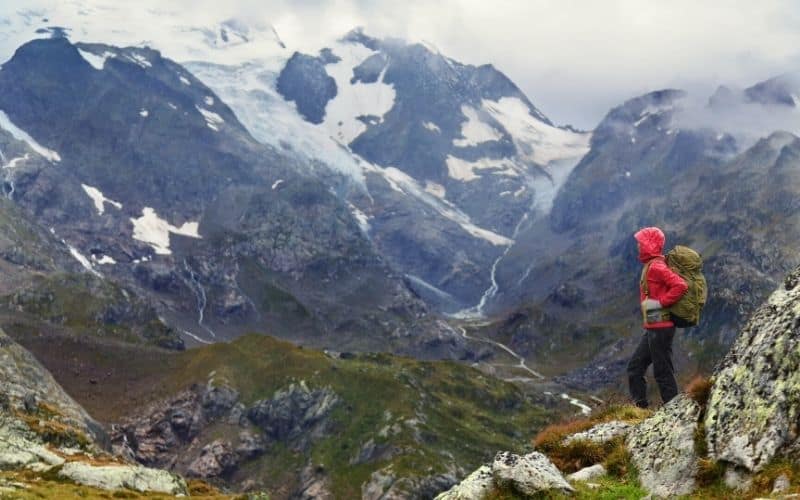
How to Choose the Best Shell Jacket for You?
When choosing a new hardshell jacket, we believe you should keep the following criteria in mind.
- Waterproofing & Weather protection
- Ventilation & Breathability
- Mobility & Fit
- Weight & Packed Size
- Durability
- Features & Design
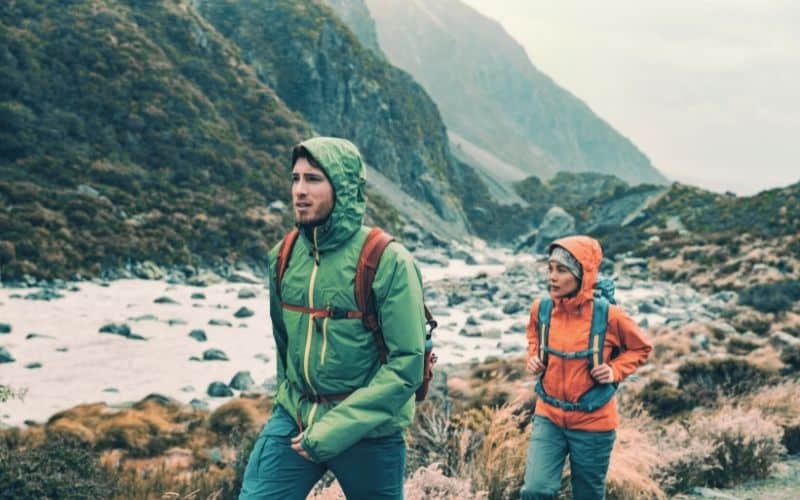
Waterproofing & Weather Protection
Protection from rain and wind is typically the primary consideration you should look at when choosing a hardshell jacket. Hardshell jackets use a variety of waterproofing technologies, such as Gore-Tex (standard, Pro, and Active) Mammut DRYtechnology Pro, Omni-Tech, and BD.dry each providing different degrees of water resistance, measured by the hydrostatic head test.
The hydrostatic head (HH) test (aka “water-column test”) measures how much water pressure a fabric can withstand before starting to leak. If, for example, the fabric starts leaking when 20,000 mm of water pressure is applied, then its hydrostatic head waterproof rating is 20,000 mm.
As you might have guessed, the higher the HH rating, the more waterproof the jacket is.
But just how waterproof do you need a jacket to be?
In truly harsh conditions in which you’re exposed to heavy precipitation in combination with strong winds (which add to water pressure on the fabric), we recommend a jacket with a HH of 20,000 mm to 30,000 mm. For general hiking in 3/4-season conditions, or if you plan on using the jacket merely as an emergency shell, then 15,000 mm to 20,000 mm will suffice.
In our review, the most weather-resistant jackets are those made with Gore-Tex Pro. This technology has a hydrostatic head of 28,000 mm and a breathability rating (more on this below) of 25,000 g/m²/24h/ It’s capable of keeping you dry, inside and out, in even the gnarliest weather, and no matter how high-output your activity is.
Our review includes three Gore-Tex Pro jackets – the Arc’teryx Beta AR, ME Lhotse, and Mammut Nordwand. All of these offer bombproof waterproofing in combination with excellent breathability, making them a great pick for alpine adventures and seriously sucky weather.
With a HH of 15,000 mm, the OR Microgravity is the least waterproof option on our list, followed by the BD Highline Stretch and Mammut Kento (20,000 mm). While this makes these jackets significantly less protective than their pricier peers, all three offer robust enough weather resistance for hikes in all but the most extreme conditions and at more affordable prices.
All of the jackets in our review also use a DWR (durable water-repellent) coating. This is a hydrophobic (water-repellent) finish applied to the outer layer of the jacket that causes water to bead up on the surface instead of soaking into the fabric. This provides a “first line of defense” that helps to prevent the jacket from “wetting out.”
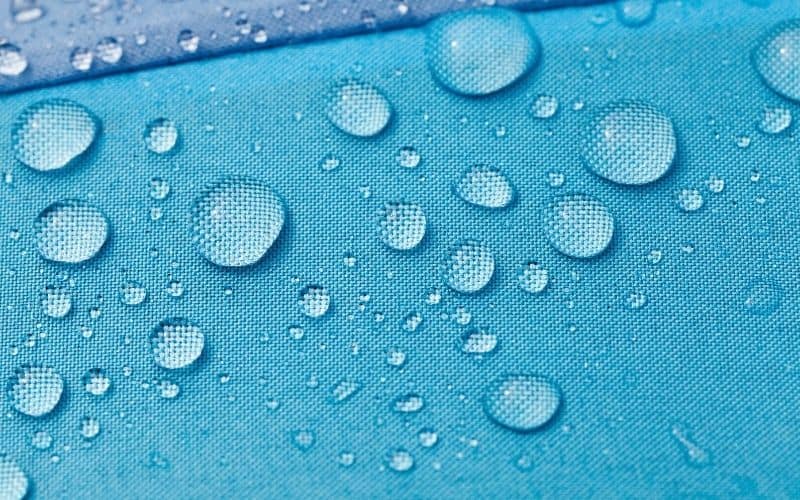
Ventilation & Breathability
The ability of your jacket to ventilate and breath is an important consideration. A great hardshell jacket not only needs to keep moisture out but also permit air entry to release sweat and excess body heat, which depends on the fabric’s breathability and the jacket’s ventilation features.
To give you the option of boosting airflow and dumping heat when need be, some jackets include extra ventilation features. The most common of these are “pit zips” (underarm zippers), adjustable cuffs, and mesh pockets, all of which can be closed to keep heat in when temps are low or opened to let in fresh air when you’re working up a sweat.
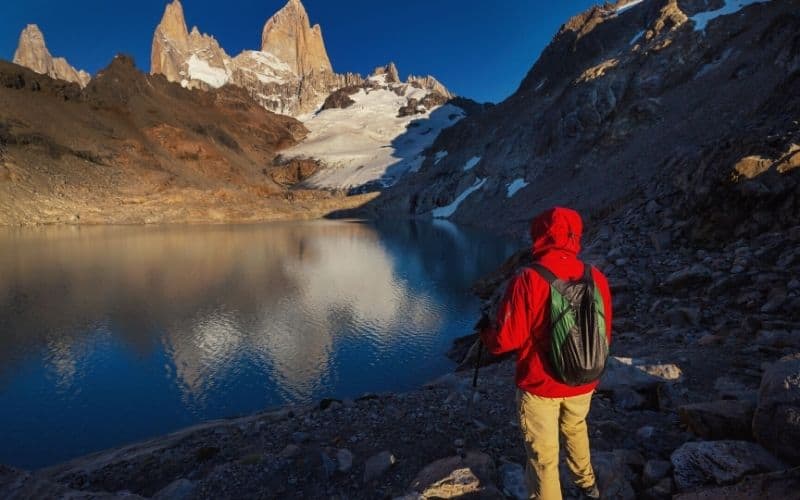
All of the jackets on our list have adjustable cuffs, and the only ones that don’t have pit zips are the Patagonia Storm10 and Outdoor Research Microgravity.
This refers to the fabric’s ability to let your sweat escape from inside to out, helping to avoid becoming soaked in your own perspiration when you start exerting yourself on the trail.
Breathability is quantified using the moisture vapor transmission rate (MVTR), which measures how much moisture vapor can escape through a square meter of fabric in a 24-hour period. In product listings, the MVTR usually looks like this: 17,000 g/m²/24h, 28,000 g/m²/day, etc., and the higher the figure, the more breathable the fabric is.
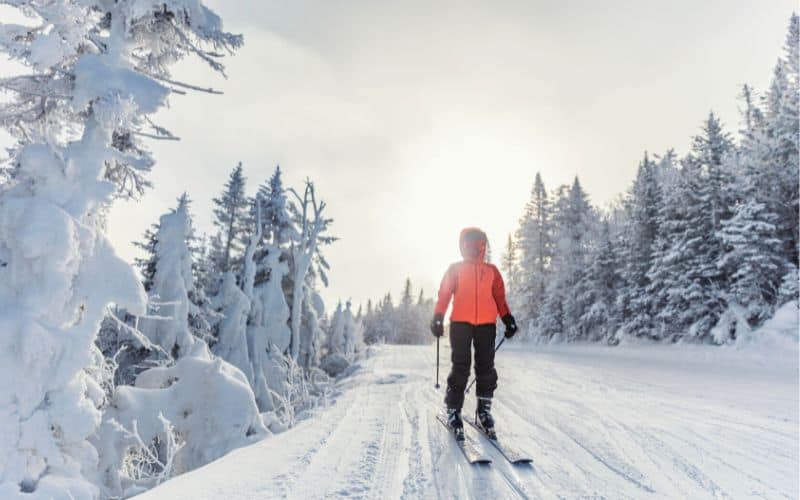
For high-output activities like trail running, backcountry skiing, and more intense hiking, we recommend choosing a hardshell with an MVTR of at least 20,000 g/m²/d. For general hiking, those with an MVTR of 12,500 – 20,000 will likely suffice.
The most breathable hardshells on our list are those made with Ascentshell or either Gore-Tex Pro or Gore-Tex Active waterproof-breathable fabric, which have an MVTR of 30,000 and 25,000 g/m2/24 h respectively. These models include the OR Microgravity (AscentShell), Mammut Nordwand Advanced, Arc’teryx Beta AR, and Mountain Equipment Lhotse.
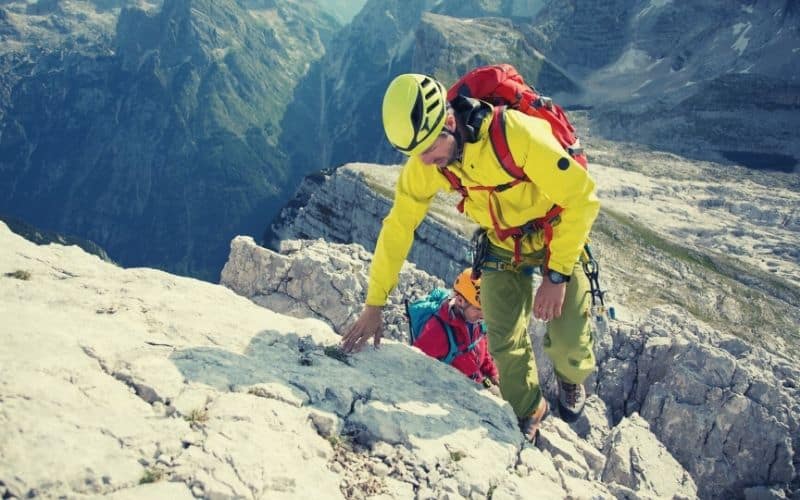
Mobility & Fit
The fit of the jacket and its impact on mobility are important criteria. Traditionally, hardshells have been less flexible than softshells, limiting movement. However, recent innovations in design and features by manufacturers have significantly improved their flexibility.
The most important mobility-enhancing design features are articulated arms and/or shoulders like those found in the Arc’teryx Beta AR, ME Lhotse, and Mammut Kento, underarm gussets like those in the Mammut Nordwand and Beta AR, and stretchy fabric like that used in the BD Highline.
Concerning fit, the three styles you’re more likely to come across when surveying the options are “standard”, “alpine”, and “minimalist.”
Standard jacket fits are usually the roomiest of the bunch, leaving you plenty of room for layers underneath. The only downside of this fit is that they usually weigh a fraction more and are prone to billowing in the wind. Alpine and minimalist fits are more trim and ergonomic, meaning there’s less room for under-layers but also less weight and bulk.
Weight & Packed Size
WE would recommend you consider the weight and packed size of your new jacket. Since it’ll often be stowed in your backpack these factors are essential, particularly for backpacking, alpine activities, or if you prefer to minimize your load.
It’s worth bearing in mind, however, that some jackets at the lighter end of the spectrum can compromise on weather resistance and durability in a bid to keep weight down. They also often have a less comprehensive feature set, lacking non-essential but very handy add-ons like pit zips, extra pockets, or gusseted underarms.
For example, the Patagonia Storm10, the lightest model on our list, is also the only one to have no pit zips. It also lacks any gussets in the shoulders or arms and is made with thinner, 20-denier fabric.
The heaviest option, the ME Lhotse, on the other hand, is made with 40d & 80d fabric, boasts an extra chest and interior pocket, and has full articulation throughout.
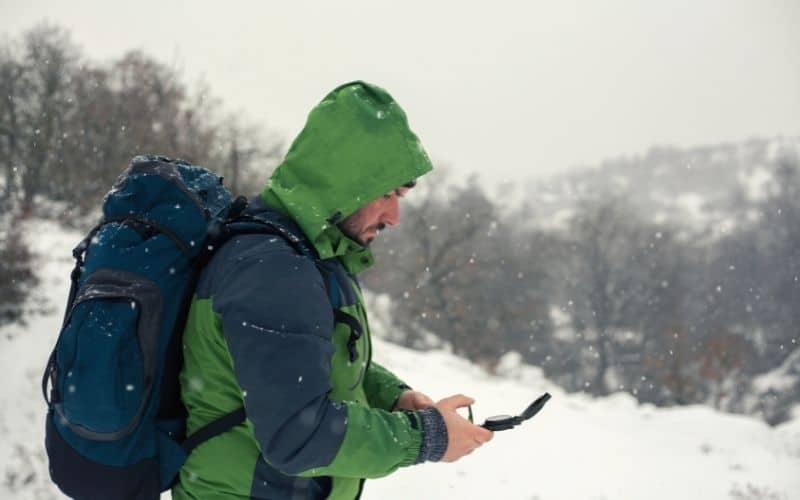
Durability
The most reliable indicator of how durable and rip-resistant a hardshell will be is the thickness of the fabric and the type of weave (standard or ripstop) used in its construction.
Fabric thickness is quantified in the denier rating (d), which measures the density of the fabric’s fibers.
Generally speaking, a higher denier count equates to a more durable and resilient fabric. However, fabrics made with a “ripstop” weave are less susceptible to punctures, rips, and tears than those made with a standard weave. This means that a jacket that uses 30d ripstop fabric will normally be just as tough as a one in the 40-60d range that uses a regular weave.
Durability is, of course, a characteristic we’d all like our jackets to have. However, it’s worth bearing in mind that the trade-off for added durability is reduced packability and extra weight. Jackets that use high-denier, harder-wearing fabrics will usually weigh at least a few ounces more than those made with flimsier fabric.
Thanks to their 3-layer constructions, all of the jackets on our list excel on the durability front. The most durable, however, is the Mammut Nordwand, which tips the scales at a pretty hefty 15.7 oz. but is made with virtually bulletproof 80d ripstop fabric.
Features & Design
Certain non-standard features and design elements can significantly improve a jacket’s performance, comfort, and convenience. Based on extensive experience, we have identified the most crucial of these features.
- Helmet-Friendly Hoods
- Backpack Friendly Pockets
- Chin Strap
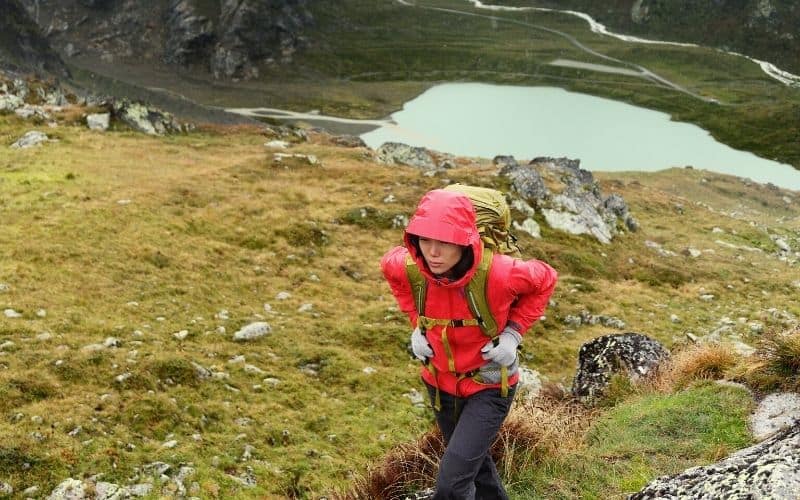
Helmet Friendly Hoods
The vast majority of hardshell jackets have a hood, of course, but there’s a huge difference between a hood that’s well-designed and one that’s not.
When buying, look for “full adjustability,” which means the hood has cinch cords both at the sides and the rear. These allow you to cinch the hood down on your head, thus preventing it from being blown back by the wind and improving your peripheral vision by allowing the hood to turn in tandem with your head.
We also recommend choosing a hood with a wired peak. This feature creates a small awning, of sorts, above your brow, which helps to keep rainwater out of your face.
Finally, if you plan on doing any mountaineering or scrambling, look for a jacket with a hood that’s helmet-compatible. The extra material used in this style of hood not only allows for a helmet to be worn underneath but also helps prevent the hem of the jacket from riding up when wearing one.
Pockets
Believe it or not, not all hardshell jackets are blessed with this small but – for some – highly important feature. Besides giving you something to stick your hands in when they’re cold, pockets are useful for stashing small essentials you like to keep to hand and, if they’re mesh-lined, ventilating when things start getting a little sticky under the collar.
For added convenience, the pockets on some jackets (the ME Lhotse, for example) are placed higher on the body to allow for easier access when you’re wearing a hipbelt or harness.
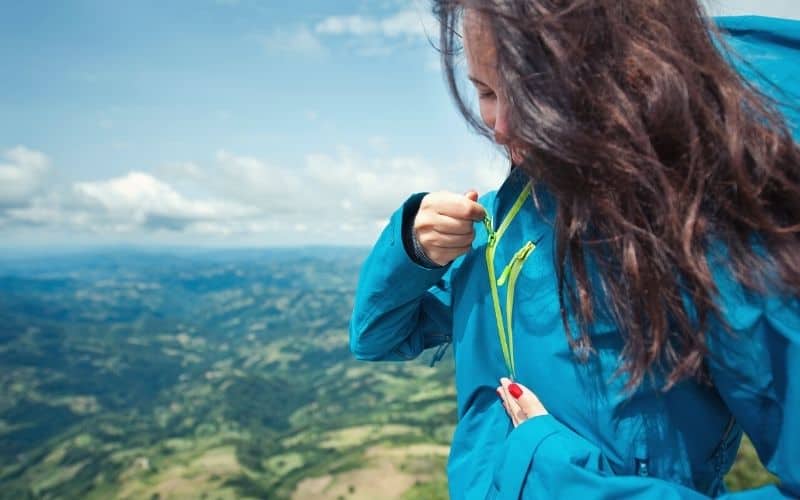
Chin Guard
This is an insert of softer fabric that protects your chin against the rougher shell fabric providing a more comfortable, chafe-free experience for your skin!
Who Makes the Best Hard Shell Rain Jacket: The Verdict
Our top hardshell jacket pick is the Arc’teryx Beta AR. It excels in waterproofing, ranks highest in comfort among those we reviewed, is extremely durable, and comes with an array of convenient and practical features.
If you’re on a tighter budget, we recommend going for the Mammut Kento. While not as performance-oriented as other options on our list, the Kento is waterproof, breathable, and mobile enough for the needs of most hikers.
So, how did you like our article? If we missed anything or you have any questions, let us know! And if you’d like to share this post with your friends, please do!
